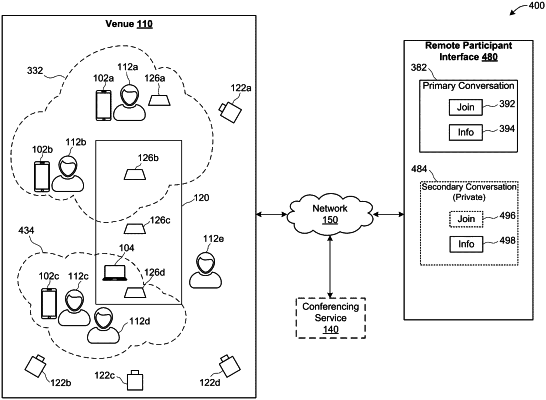| CPC H04L 65/403 (2013.01) [H04L 63/04 (2013.01); H04L 65/4015 (2013.01)] | 24 Claims |

|
1. A method of processing audio data, the method comprising:
identifying a primary conversation of a group communication session including a plurality of in-person participants and at least one remote participant;
detecting a secondary conversation between two or more in-person participants of the plurality of in-person participants of the group communication session based on first audio data between the two or more in-person participants, wherein the secondary conversation is different from the primary conversation;
identifying the secondary conversation as private in response to identifying the first audio data as private based on at least one visual cue determined based on first video data corresponding to the first audio data;
identifying the secondary conversation between the two or more in-person participants as transitioning from private to non-private in response to identifying second audio data between the two or more in-person participants as non-private based on at least one additional visual cue determined based on second video data corresponding to the second audio data, and wherein the at least one additional visual cue is different from the at least one visual cue; and
outputting the second audio data of the secondary conversation based on identifying the second audio data as non-private and excluding the first audio data of the secondary conversation from being output based on identifying the first audio data as private.
|